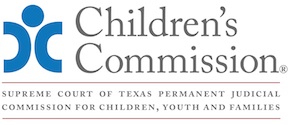F. Placement
1. Child Placement Resources Form
DFPS may place a child with a relative or other designated caregiver identified on the proposed Child Placement Resources Form.
DFPS:
• Must determine that the placement is in the best interest of the child;
• Must complete the background and criminal history check and conduct a preliminary evaluation of the relative or other designated caregiver's home before the child is placed with the relative or other designated caregiver;
• May place the child before conducting the background and criminal history check or home study required by Tex. Fam. Code § 262.114(a). Not later than 48 hours after the time that the child is placed with the relative or other designated caregiver, DFPS shall begin the home study of the relative or other designated caregiver. DFPS shall complete the home study as soon as possible unless otherwise ordered by a court; and
• Shall provide a copy of an informational manual required under Tex. Fam. Code § 261.3071 to the relative or other designated caregiver at the time of the child's placement. Tex. Fam. Code § 262.114(b).
• Must give preference in hierarchical order, from relatives, fictive kin, foster homes, and GROs. Tex. Fam. Code § 262.114(d).
If a child is not placed with a relative, the court shall at each hearing under Tex. Fam. Code Chapter 262, include in its findings a statement on whether DFPS has elicited information regarding potential caregivers from the child. Tex. Fam. Code § 262.0022(1).
A foster parent with whom the child previously resided shall be considered for placement if:
• DFPS determines that placement of the child with a relative or designated caregiver is not in the child's best interest; and
• The placement is available and is in the child's best interest. Tex. Fam. Code § 262.114(c).
Special Issue: Courts are also required at each permanency hearing held under Chapter 263 to review the placement of each child who is not placed with a relative caregiver or designated caregiver as defined by Tex. Fam. Code § 264.751 and make a finding as to whether DFPS is able to place the child with a relative or designated caregiver and to state the evidence that supports its finding either way. Tex. Fam. Code § 263.002(b). Doing so promotes positive permanency for children and youth. Positive permanency means that the child exits DFPS care into a permanent setting that includes a legal relationship to a family. Keeping positive permanency in mind throughout the entire child welfare case can facilitate identifying best outcomes for the child at every stage of the case.
2. Caregiver Visit with Child; Information
Before placing a child with a proposed relative or other designated caregiver, DFPS must:
• Arrange a visit between the child and the proposed caregiver; and
• Provide the proposed caregiver with a form (which may be the same form DFPS provides to nonrelative caregivers) containing information, to the extent it is available, about the child that would enhance continuity of care for the child, including:
◦ the child's school information and educational needs;
◦ the child's medical, dental, and mental health care information;
◦ the child's social and family information; and
◦ any other information about the child DFPS determines will assist the proposed caregiver in meeting the child's needs. Tex. Fam. Code § 264.7541(a).
DFPS may waive the requirements if the proposed relative or other designated caregiver has a long-standing or significant relationship with the child and has provided care for the child at any time during the 12 months preceding the date of the proposed placement. Tex. Fam. Code § 264.7541(b).
3. Unacceptable Facilities for Housing Child
When a child is taken into possession and no allegations of delinquent conduct, conduct in need of supervision, or criminal conduct have been made, that child may not be held in isolation or in a jail, juvenile detention facility, or other secure detention facility. Tex. Fam. Code § 262.108.
